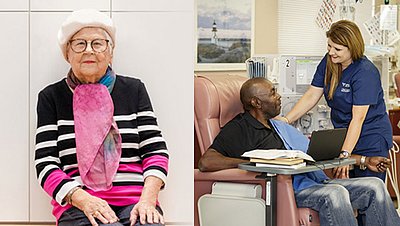Fresenius Medical Care In-Center dialysis products, therapies and services for Healthcare Professionals.
Aborigines receive dialysis treatment in their home environment.
A truck allows the Indigenous Australians to receive dialysis treatment away from the big cities in their home environment
Equal opportunities
Fresenius Medical Care played a key role in the project by providing the technical installations. “In Adelaide, where the truck was equipped, our engineers worked on the concept for a long time,” says Margot Hurwitz, ceo of Fresenius Medical Care Australia & New Zealand. After all, the technology has to be extremely robust. Most of the roads in the outback are dirt roads, dusty corrugated tracks that usually only an all-terrain vehicle can manage. Here the truck is subjected to extreme mechanical strain. Add to this the climatic challenges in the desert.
Although Indigenous Australians only make up 2% of Australia’s total population, they represent 10% of those needing dialysis. “Indigenous Australians are up to 15-30 times more likely to get kidney disease than other population groups,” says Margot Hurwitz. This is mainly due to poverty, diabetes and hypertension as well as premature birth, skin infections and harsh environmental conditions. In Papunya hope is growing that the medical and social challenges will now start to improve. Jedda Marshall’s return proves that the road to dialysis in Alice Springs is not just one way.







